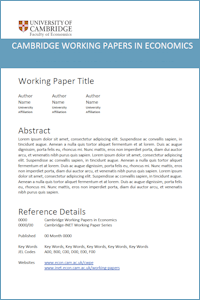
Kelly, S.
Do homes that are more energy efficient consume less energy?: A structural equation model for England's residential sector
CWPE1139
Abstract: Energy consumption from the residential sector is a complex sociotechnical problem that can be explained using a combination of physical, demographic and behavioural characteristics of a dwelling and its occupants. A structural equation model (SEM) is introduced to calculate the magnitude and significance of explanatory variables on residential energy consumption. The benefit of this approach is that it explains the complex relationships that exist between manifest variables and their overall effect through direct, indirect and total effects on energy consumption. Using the English House Condition Survey (EHCS) consisting of 2531 unique cases, the main drivers behind residential energy consumption are found to be the number of household occupants, floor area, household income, dwelling efficiency (SAP), household heating patterns and living room temperature. In the multivariate case, SAP explains very little of the variance of residential energy consumption. However, this procedure fails to account for simultaneity bias between energy consumption and SAP. Using SEM its shown that dwelling energy efficiency (SAP), has reciprocal causality with dwelling energy consumption and the magnitude of these two effects are calculable. When nonrecursivity between SAP and energy consumption is allowed for, SAP is shown to have a moderately negative effect on energy consumption but conversely, homes with a propensity to consume more energy have a higher SAP rating and are therefore more efficient.
Keywords: Residential, energy, modelling, SAP, structural equation efficiency
JEL Codes: C50 Q40
PDF: https://www.econ.cam.ac.uk/research-files/repec/cam/pdf/cwpe1139.pdf 
EPRG Paper Link: 1117
Open Access Link: https://doi.org/10.17863/CAM.1168
